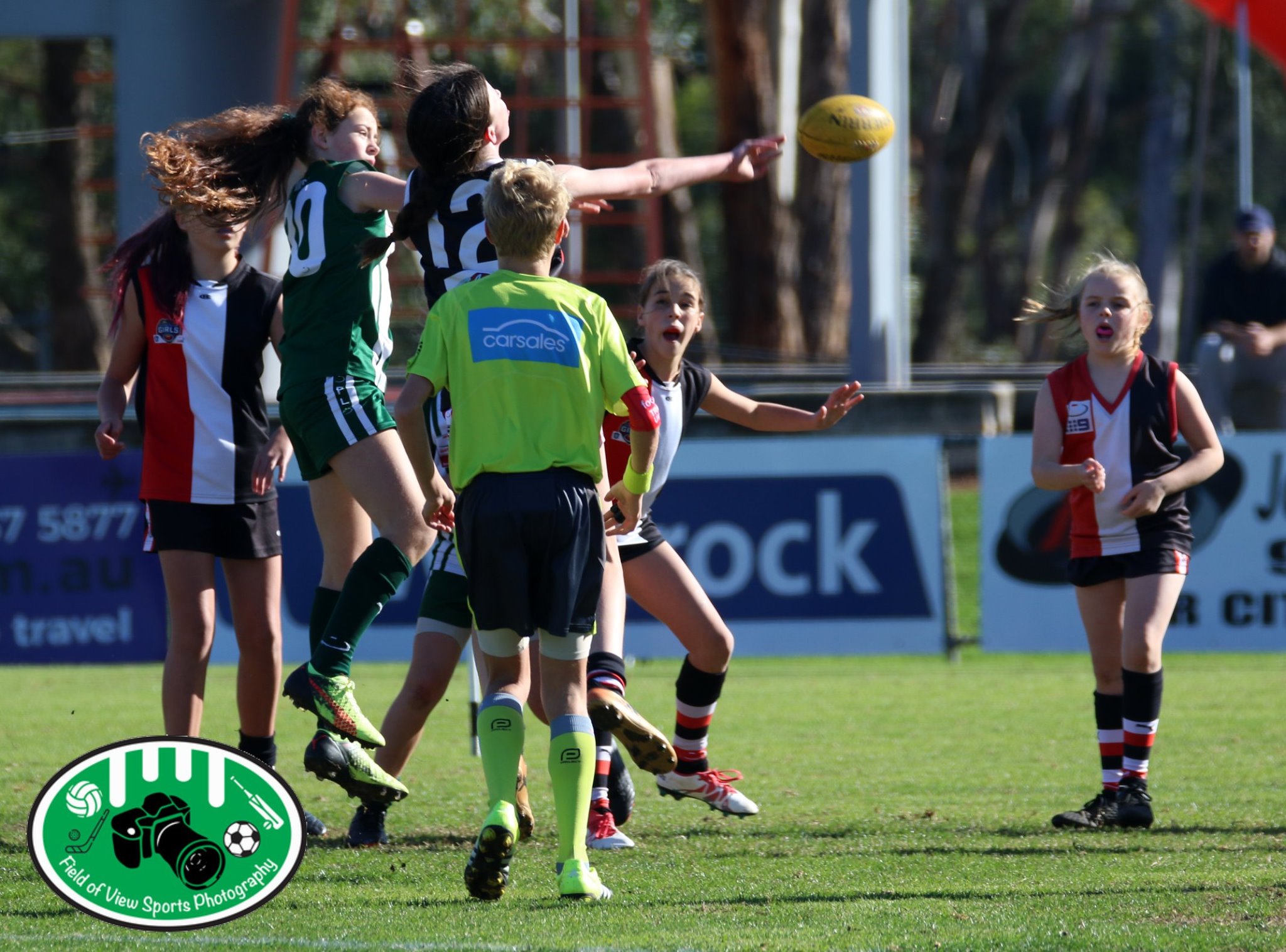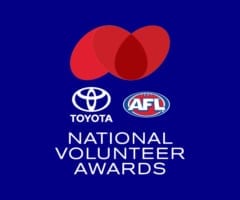By: Tash Gunawardana
SINCE the start of the 2019 season, umpires learning the craft in the Eastern Football League have been wearing a red sleeve displaying the words ‘trainee umpire’.
In a new initiative this year, EFL Head Junior Field Umpire Coach Sean Clarke provided his insights on why the red sleeves have been introduced.
“The idea around the trainee umpire sleeve – and this is for all umpires; goal and field umpires that are new – is it shows that all participants of the game and the spectators that this is an umpire who is learning the ropes in their chosen field and to give them a bit of understanding,” Clarke said.
“There will always be noise coming from the boundary and we just want to make sure they understand that most of them are kids who are learning.
“They’re developing and they need support and encouragement rather than derision and challenges on what calls they are making whether it’s a goal or a point, whether it’s out on the full or out of bounds or a high tackle or a holding ball.
“Whatever the decision they make they’re not being derided for it and people will understand they are learning the game and they will make an error or two here and there just as players do.
“In fact, they will make less than a player does in a game.”

Clarke has been pleased with how positively the red sleeves have been received from the wider football community.
“It’s been well-received from my perspective as a junior umpire coach – I have had upwards of 100 first-game umpires in the first half of the junior season,” he said.
“When people can go out and I go out to grounds every weekend and see a lot of umpires with them and the comments you hear from the crowd are pretty good.
“I have had a few people approach me and say what’s with the red armbands and generally you have got a red sleeve umpire with a more experienced umpire.
“Sometimes they are together and they understand that they are learning, it’s really been quite positive from all perspectives and just because they have got a red sleeve doesn’t mean that we accept that they’re going to be wrong all the time.
“It means that they’re learning, they’re developing and they will make a mistake or two and we just need to understand that they are doing the best job that they can and that has really come across – we have got some great feedback from clubs, supporters and the umpires themselves.
“They think that it’s pretty good to have that almost as somewhat of a security blanket.
“One area that is really important for us is that we couldn’t do what we do without the parents and parents are quite appreciative as the fact that we have got a red sleeve to let people know they are trainees and to not hear their kids being abused week in, week out.”
Clarke says there is no set time on wearing the red sleeve as it depends on the learning and development of the individual.
“We have got some first-year umpires that are umpiring under-19s reserves football already,” he said.
“They may still wear those, because there are aspects of the game with all due respect to spectators, coaches and players, people look at an umpire on the decision that they make.
“What we look at is are they in the correct decision-making position, is there work-rate up, are they triggering and these are all things that people will probably will not recognise, but we need them to do our little umpire one-percenters.
“At the moment, most have still got them given the complexity of field umpiring, my junior field umpires will wear them a little bit longer than a boundary or a goal umpire might.
“We will assess, as we have coaches who will go and watch the games and make an assessment, we get feedback from clubs with coaches reports and just general observation.
“Then we will make those assessments and I will be looking very closely at that in the next three weeks in the lead up to the next bye.
“We hope this will be an important step and we will be asking the umpires to bring their armbands to training, we will be asking them to come up and hand them, as they don’t need them anymore.
“To make it a bit of recognition for them.
“We are all about creating supporting, welcoming and an environment in which they feel comfortable so that’s all part of it.
“I think we will see a few umpires losing them in the next few weeks.”
Clarke is thrilled with how the crowd has reacted from when the trainee umpires did not wear them till now.
He has been a junior umpire coach for five years in the Eastern Football League and believes with the red sleeves the crowds in the seniors and juniors are improving all the time.
“I think this is just another step in making that happen, so I would say there has been an increase in crowd behaviour,” he said.
“They have a greater understanding of what happens in the game and what these kids are trying, so I would say yes it has had an impact in continuing the improvement in crowd behaviour in the junior footy in the Eastern Football League.”
The red sleeves are worn across all disciplines across the Eastern Football League.
“I was goal umpiring a game and a kid was the boundary and he had a red sleeve and someone yelled something out and another spectator said give him a break he’s learning and this was round one or two,” Clarke said.
“It was really good to hear that, but goal umpires and boundary umpires are seniors.
“When our umpires move up a few of them in the field, we have got a few first year umpires who began as trainees who are umpiring in Premier reserves.
“We have got some first year umpires umpiring senior footy (and) they’re not going to go into a senior game with their sleeve on.
“Our emerging umpires watched a few of them and they are not wearing them on the Saturday as they actually demonstrated that they know what they are on about.
“They’re learning what happens at under-19s can be different to what happens at under-13s so they might take them off on the Saturday after they reached that level of development and we will of course match that with the juniors.
“Yes there aren’t as many running around with them on Saturday football now, because if they have spent the first eight or six weeks been good enough to get that elevation we have to think they are good enough to remove it after a couple of games up there.
“Part of the reason we will keep them in a sleeve for under-19s is because the games are a lot quicker.
“The movement is different, we now have the boundary umpires involved which they are not used to in juniors, so they need to learn that part of the game.
“Having boundary umpires means we need to keep them on for a little while longer but we take them off a lot quicker once they get there.”
The majority of the trainee umpires are kids and are now treated with more respect, creating a supportive environment.
“It’s welcoming, they feel safe these kids and I think that we are trying to provide an environment that has safety and comfort for them,” Clarke said.
“To go into games knowing ‘hey everyone knows I’m new, it’s alright’, I think that’s really been the key the environment that we present to umpires and families particularly their parents that we are not just throwing them out there wishing them luck and hoping they don’t get crucified.
“We’re putting them out there saying you’ve got our support, wear the sleeve (and) people know what it’s about and the club response has been very good too in support of it.”










































